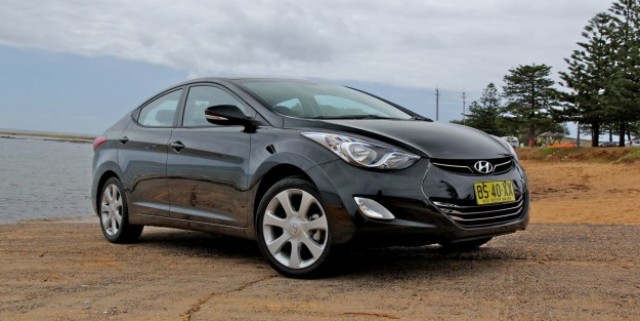
The Hyundai Elantra is another one of those small cars that is more mid-size when it comes to interior space and luggage capacity.
Launched in Australia in June 2011, the fifth-generation Hyundai Elantra is the Korean carmaker’s sedan entrant in the high-volume and highly competitive small car ring that includes heavyweights such as the Toyota Corolla, Mazda3, Ford Focus, Honda Civic, Holden Cruze and even the Volkswagen Jetta.
It’s aimed at i30 buyers that prefer a boot to a hatch, in the same way that Jetta targets Volkswagen Golf buyers who want a boot. Or at least that’s the premise.

Despite the highly creditable competition, though, Elantra’s sleek, low-slung design remains one of the standout lookers in the segment.
There have been few changes to Elantra apart from a minor spec update in March 2012, which saw all three variants (Active, Elite and Premium) gain a new five-inch colour touch screen audio system along with chrome interior door handles (Elite and Premium variants only).
Aerodynamic windshield wipers were also added across the range to reduce wind noise and improve the look.
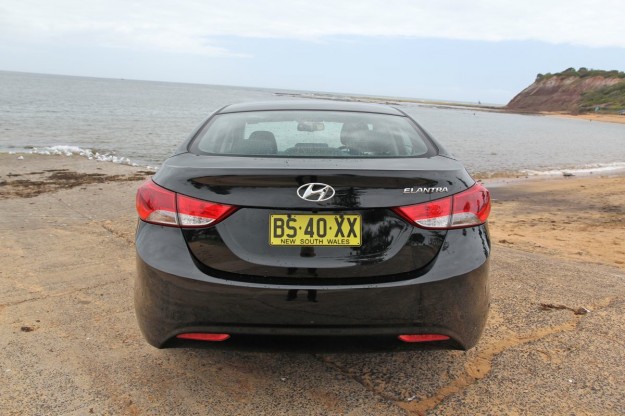
Those expecting a more substantial update will need to wait until 2014, when the Hyundai Elantra will most likely go under the knife for a mid-life makeover, given Hyundai’s history of updating a model some three years into its lifecycle. Until then, though, it’s fluidic sculpture style with swoopy lines and eye-catching creases should remain contemporary among key rivals.
Boasting generous levels of kit in comparison with some rivals, the Elantra range is also well priced – from the entry-level Active with six-speed manual transmission (optional six-speed auto is available) at $20,590 (before on-road costs), to the range-topping Premium we tested here, with standard six-speed automatic, and priced from $28,990.
The mid-spec Elite carries a $23,590 price tag and also gets a standard six-speed auto.
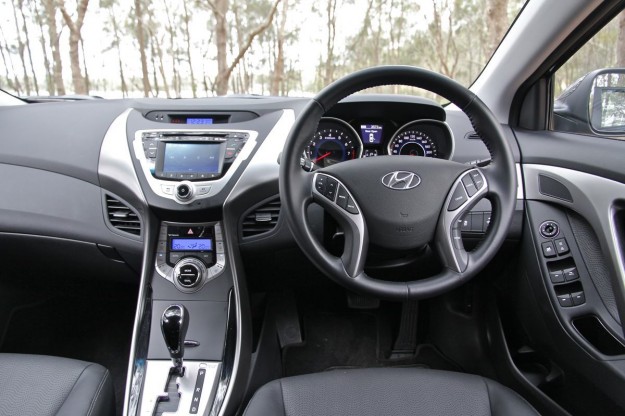
The top-shelf Premium model is exceptionally well equipped for a vehicle in this class, with standard inventory such as rear-view camera with rear parking sensors, keyless entry with proximity key and push button start, electrochromatic rear view mirror and auto sensing headlights and wipers.
Additional creature comforts include an electric sunroof, dual-zone climate control, electrically-operated driver’s seat, front seat heating; partial leather trim and Bluetooth phone and music streaming rounding out the key features.
About the only thing missing from Elantra’s well-stocked interior is satellite navigation – it’s not even an option, but expect the technology to make it onto the standard kit list for the updated version.
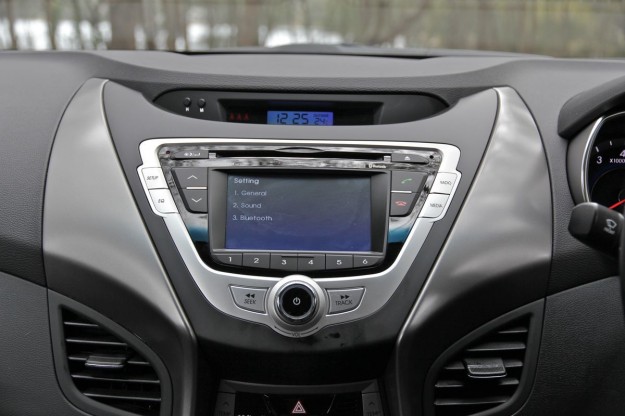
Inside, Elantra is a mixed bag. While there’s plenty to like such as the funky styling, comfortable seats and generous space – it’s the ergonomics and functionality that perhaps need a tad more attention.
Take the heating and cooling vents; they’re too small and are set too low to provide proper relief on those all-too-frequent summer scorchers – as tested.
Similarly, the switchgear for the air-conditioning control module, particularly the temperature-set buttons, aren’t all that easy to read from the driver’s seat, as they’re partially shadowed by the large plastic overhang above.
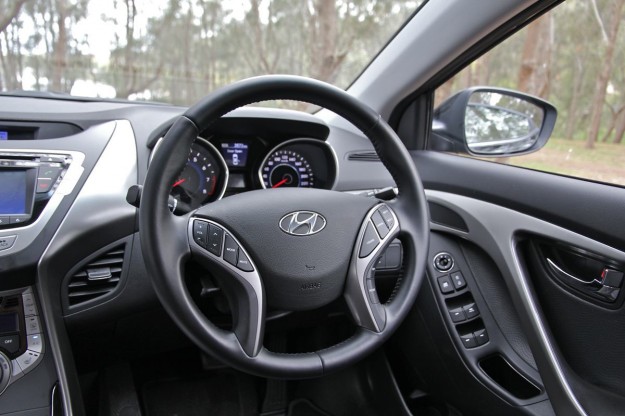
On the plus side there’s a leather-wrapped steering wheel (although the leather isn’t tactile enough) that provides audio, cruise and trip functions, along with a decent sound system that pairs-up well with Bluetooth streaming devices.
Storage spaces are aplenty inside Elantra, which gets numerous cubbyholes and a boot capacity of 420 litres including a full-size spare wheel. Load space can be expanded through the 60/40 split rear seat backs, but flexibility is compromised by not folding completely flat.
The Hyundai Elantra is also well equipped on the safety front, too, with a full suite of active and passive driver aids backing-up its full five-star ANCAP safety rating.
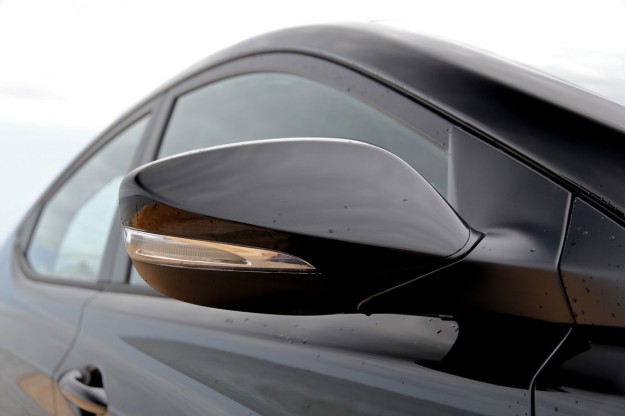
Generally speaking, it’s a comfy ride, with the Elantra’s soft suspension better able to deal with patchwork roads and potholes.
The downside is that there’s more body roll than desired, but there’s little affect on the car’s handling and composure through corners – even when pushed.
The Elantra employs electric power steering and while it’s comfortably weighted for easy parking and effortless cruising, the steering itself, can feel artificial and decidedly numb at more moderate speeds.

Elantra’s ‘Nu’ 110kW/178Nm 1.8-litre engine isn’t the most powerful unit in class, offering less torque than most key rivals, so performance is more adequate than zippy around town.
The six-speed automatic transmission is calibrated for the best possible fuel economy, so there’s always an urgency to climb into sixth gear as quickly as possible – and it does so relatively smoothly, at least under a gentle throttle.
Under slightly heavier throttle loads, though, the transmission is far too eager to hunt for lower gears to compensate for the lack of torque, so things can get a tad noisy at times, despite decent levels of noise insulation built in to this car.
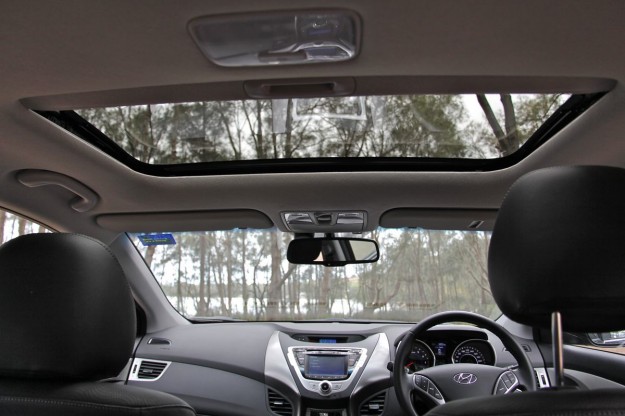
So, the Elantra tends to work harder than expected around the city, which also affects fuel economy in a negative way.
We averaged 8.8L/100km during our road test, which is more than the Hyundai’s official combined figure of 7.1L/100km but better than the solely urban figure of 9.4L/100km.
Despite being almost 19 months old and still awaiting its first update, Hyundai’s Elantra remains a compelling value-for-money proposition in any of its three trim levels.
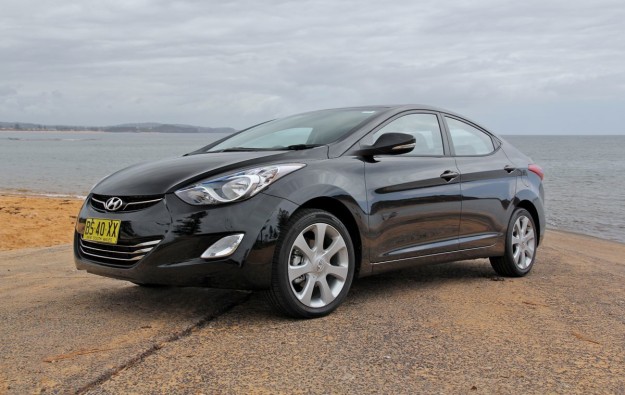
Its eye-catching design, mid-size cabin space and extensive features list make it difficult to ignore in the small car space.





